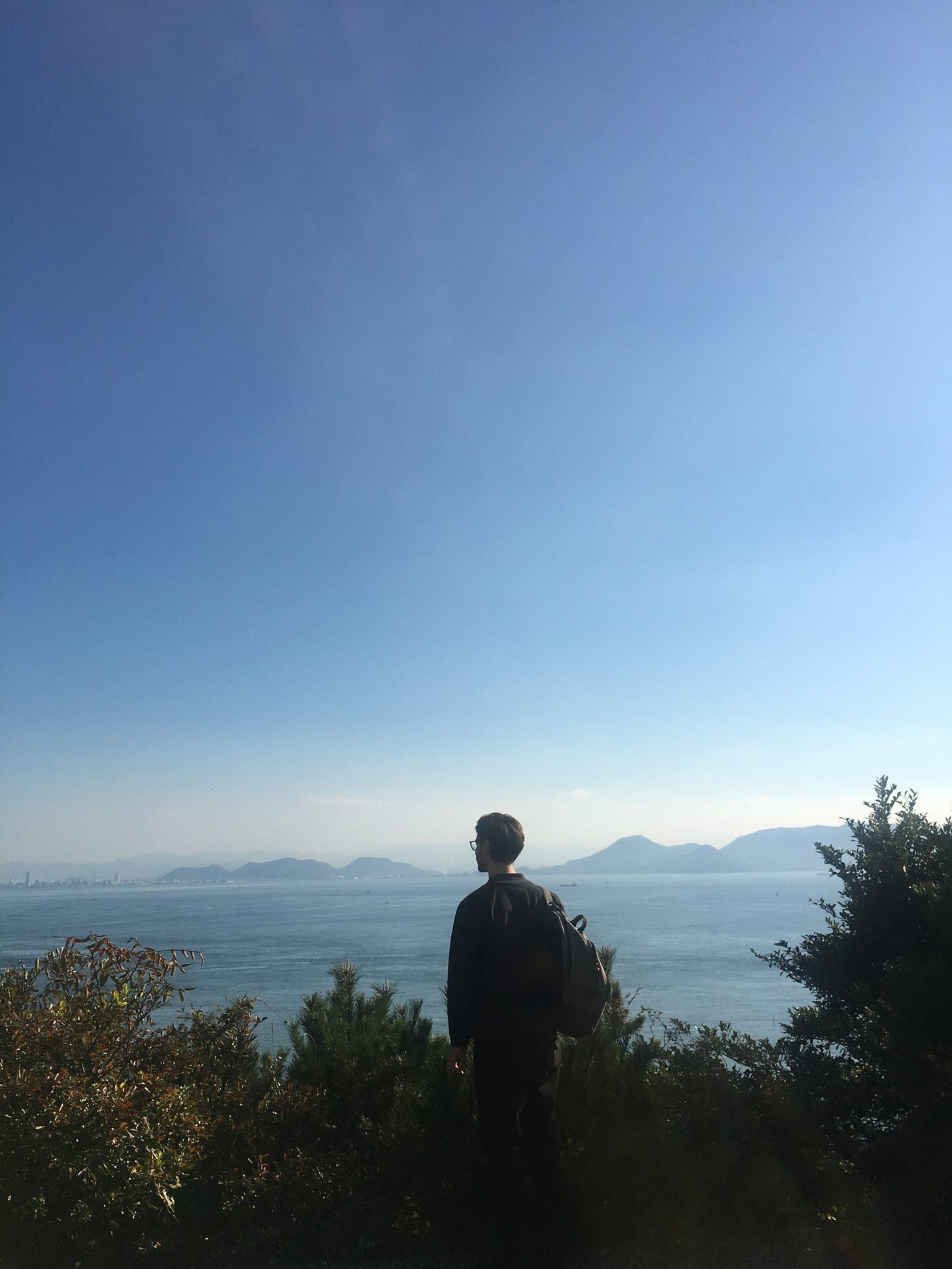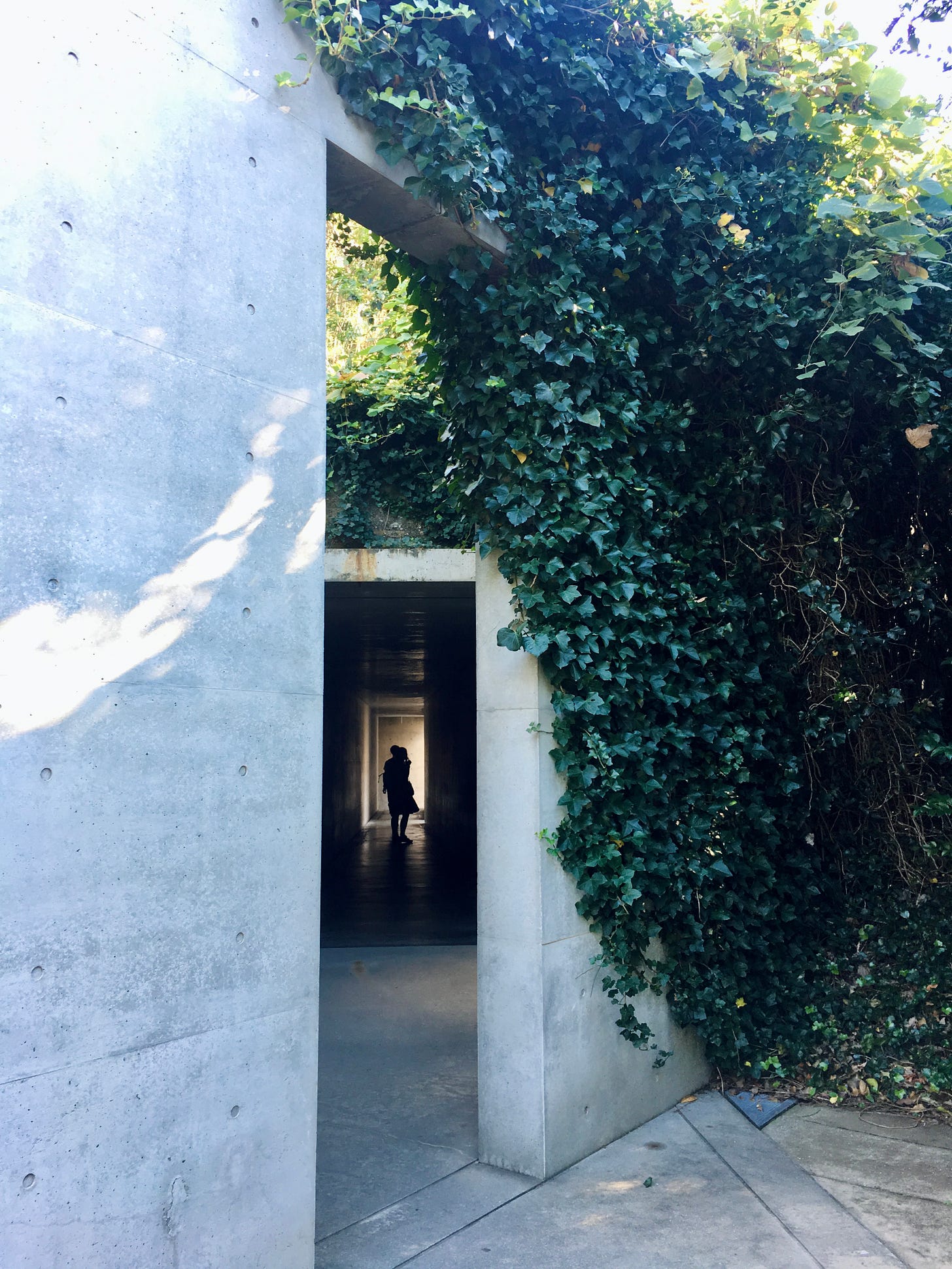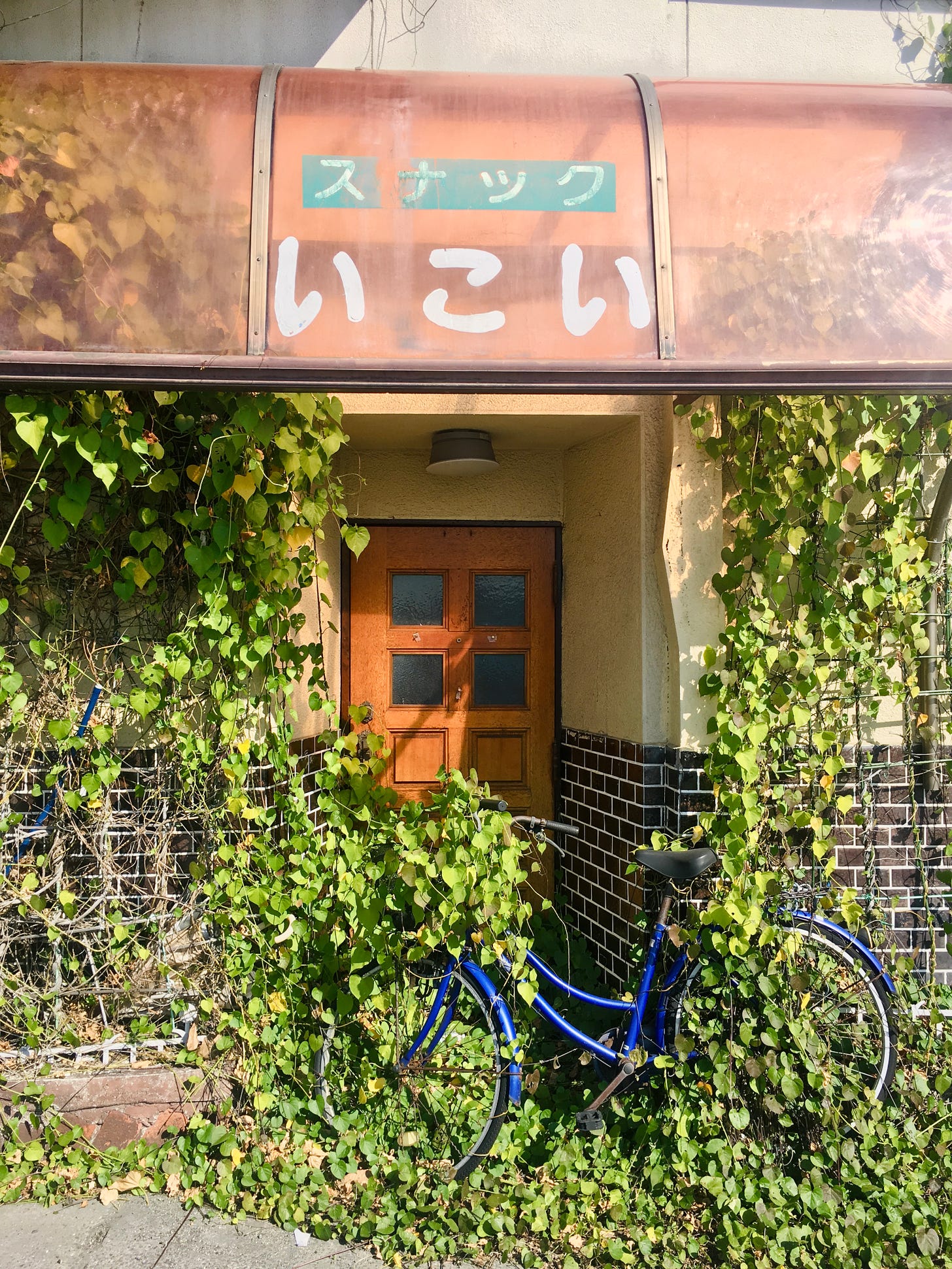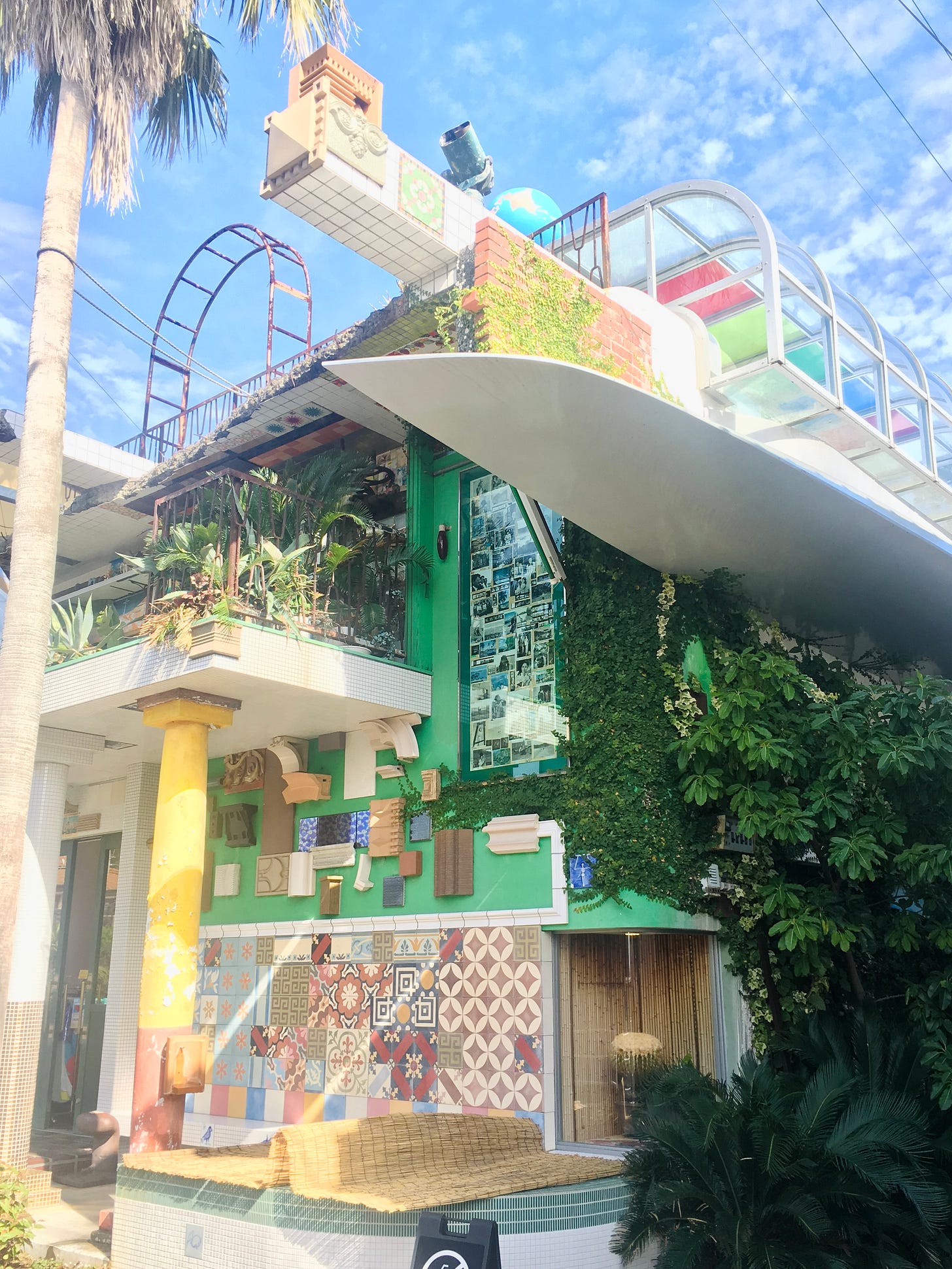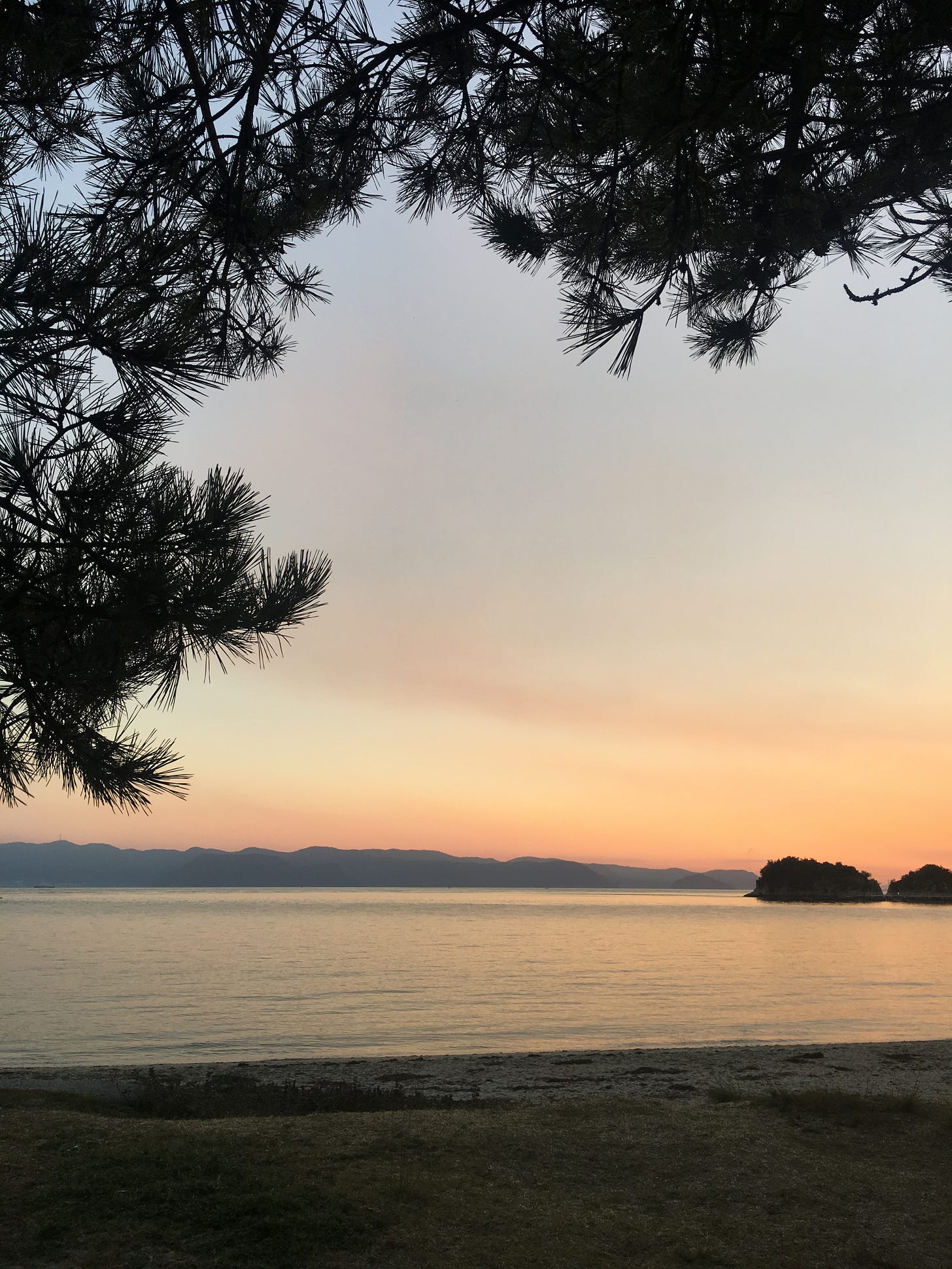Visiting the world-class art museums on this island, feels like a pilgrimage to pay homage to contemporary art. Minimalist concrete art galleries erupt out of the natural green beauty of the tropical island. So slick and remote, by location and aesthetic this place is like a Bond lair. From seeing the delicacy of Monet’s water lilies in refracted light, to Yayoi Kusamas pumpkin by the water’s edge, and stepping into one of James Turrell’s mind bending installations. I had several of the most magical art experiences of my life here!
Located in the Seto Inland Sea off the east coast. We came for a day trip, and arrived by ferry, after catching an early train from Osaka; a lengthy trip but worth it. Naoshima is one of Japan’s three art islands, the others being Teshima and Inujima. If I could do this trip again, I’d plan to see all three and stay for a few days in this magical place.
Designed by renowned Japanese architect Tadao Ando both the Benesse House Museum and Chichu Art Museum were built underground to avoid interfering with the natural scenery, and consists of several buildings connected by subterranean passageways. On entering we walked through vast corridors of polished concrete, and liminal spiral staircases in which our footsteps echoed. In a unique hybrid of museum come hotel, you can actually stay overnight at Benesse House. Guests have exclusive after-hours access, allowing you to wander through the galleries at your leisure, where you can view pieces by Cy Twombly, Jean-Michel Basquiat, as well as site specific works by Richard Long.
In The Chichu Art Museum, we encountered Walter De Maria's Time/Timeless/No Time, a striking installation that merges art and architecture. An enormous black sphere of polished black granite, like a huge pupil reminiscent of a monolith, is ominously perched atop a staircase. The space feels church-like with high ceilings and vaulted light.
Ando collaborated closely with De Maria, as well as Turrell to ensure their artworks would blend seamlessly with the museum's architecture.
Experiencing James Turrell’s work was a mind-bending experience. In Open Sky, he presents light as art itself, with the gallery's roof opening to frame an ever-changing view of clouds, sunsets, and thunderstorms. However, I was most moved by his immersive installation Open Field. Guided by gallery staff dressed in white, we were escorted into a space featuring a blue projection on the wall, with deep purple steps leading up to it. After moments of contemplation, the guide invited us to step into what we had previously believed to be a projection, by a trick of the eye. Tentatively walking up the steps into what seemed to be a two dimensional surface, the landscape of the room psychedelically shifted, challenging our perception of space as we stepped inside of the artwork. I found myself immersed, completely captivated by this meditative and thought-provoking piece.
I lack photos since photography is forbidden in the gallery spaces, but perhaps that's for the best. My memories are so vividly etched in my mind, that the original imprint of the experience hasn't been overshadowed by quick snaps taken on my iPhone.
Entering the space to view Monet’s Water Lilies felt like crossing the threshold into a place of spiritual importance. Museum invigilators take special care to ask visitors to pause, and remove their shoes since the floor is made of marble cubes that reflect the light. The floor seems too delicate to walk upon so I found myself changing pace and treading more carefully. The room is designed in such a way that there are no windows, but the ceiling has been engineered to refract the natural light. Paintings are illuminated, at just the right angle, so they can be observed at their optimum.
Contrasting to the clean cut architecture of the art galleries is the local vernacular of the town. We loved meandering through small streets. In some parts of the island, there’s an abandoned feeling. Forgotten and overgrown corners add to the dreamlike atmosphere.
Naoshima was originally a remote fishing island with a copper smelting industry. It began its transformation into an international center for contemporary art in the late 1980’s primarily driven by the vision of Soichiro Fukutake, a Japanese businessman and philanthropist.
Another unique aspect of Naoshima is the Art House Project, where artists have transformed traditional empty homes into immersive art spaces.
Later, as we emerged from the Benesse Museum, we found the November weather to be so temperate that we decided to jump into the sea. Joined by other enthusiastic swimmers, we struck up conversations with international visitors from afar. The cool waters washed away the fatigue of the day's gallery explorations, and allowed us to take in more of the island's serene atmosphere.
As the sun set, we glimpsed Yayoi Kusama's iconic yellow pumpkin against a pink sky. But we had to quickly run past this, in order to catch the last bus to the ferry port: a slightly hurried ending that contrasted with the calm we'd experienced in the galleries.
As a side note, you can rent bicycles to get around the island on. We walked a large part (since we hadn’t booked ahead) and there’s also regular shuttle buses available. Just don’t miss the last one! I hope this inspires a trip for you, I for one am eager to go back.




